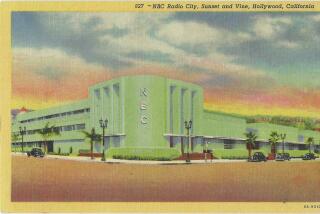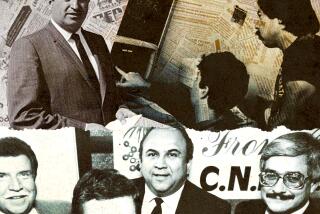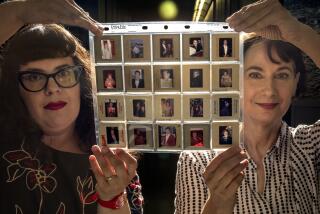Radio Days : Broadcasting: The Thousand Oaks Library serves as the unlikely repository for one of the nation’s most extensive collections of historical recordings.
When Norm Finkelstein was doing research for a book on the history of radio, he made special trips from his house near Boston to the CBS and NBC libraries in New York. But he also made a 3,000-mile journey to the Thousand Oaks Library.
Finkelstein is one of a growing number of people who have discovered that the repository for one of the nation’s most extensive collections of historical radio material is in an unlikely place--a municipal library.
“I was looking primarily for three things--photographs, mementos and memorabilia,” said Finkelstein, a Framingham, Mass., resident who spent two days in the Thousand Oaks Library’s special collections department, poring over materials for a book to be titled “Is Everybody Happy? Radio’s Golden Age.”
“I found the collection at Thousand Oaks very, very useful,” he said.
Called the American Library of Radio and Television, the special collection includes about 1,500 books, more than 10,000 radio and television scripts, and a variety of photographs, correspondence, original broadcasts, scrapbooks, production notes and miscellaneous material. It ranges from recordings of “Hedda Hopper’s Hollywood” gossip show and fan magazines such as “Radio Guide” to offbeat items such as X-rays of radio personality Rudy Vallee’s impacted wisdom tooth.
The collection is growing rapidly. The Thousand Oaks Library Foundation--a private, nonprofit fund-raising organization that has amassed the broadcast material--last month received a KNX/CBS donation of 6,500 vintage radio scripts from such classic shows as “Our Miss Brooks,” “Ozzie and Harriet” and “Gunsmoke.”
Best known for its massive Rudy Vallee collection, which the foundation purchased for $275,000 three years ago, the library also houses the special collections of award-winning journalist Clete Roberts; Fletcher Markle, creator and director of “Studio One” and “Ford Theater”; and Carlton E. Morse, whose action-suspense programs included “I Love a Mystery.”
“As far as radio’s concerned, we have the largest collection in Southern California and probably the western United States,” said Ruth Leonard, special collections librarian.
“It’s an excellent collection,” said Marty Halperin, archivist for the Pacific Pioneer Broadcasters, an 800-member group of professional radio industry people. “They’re setting themselves up to be an important source of radio history.”
About three-quarters of the collection is radio-related, Leonard said, and most of the television material is only through the early 1960s.
“Yes, it’s a specialized collection, but broadcasting covers everything--not just entertainment, but news, poetry and literature,” she said. “This is American history. It’s popular culture, not esoteric.”
The material, most of which is housed in a secure, climate-controlled storage room, is brought out to patrons in the public special collections area only under strict conditions.
Users are required to store all personal items other than paper and writing instruments in special lockers whose keys are kept by library staff; patrons are not allowed to chew gum and are asked to wash their hands frequently; and white cotton gloves are provided for those who wish to view photographs, films and other graphic materials.
Despite the tight security, the library wants to make the collection more accessible to the community. Although the library’s special collections department--which also houses Conejo Valley historical materials--more than doubled its patronage last year, its use is still limited. The department had 595 users in the 1989-90 fiscal year, up from 256 the previous year.
Most of the patrons are researchers, scholars, college students and Golden Age radio buffs, Leonard said.
But the library has put together a traveling display that it plans to show at malls, schools and other public places. And Leonard is hoping to persuade local high school teachers to assign their students research projects using the special radio collection.
“I think it will be interesting for high school students to view and listen to original material, to learn the joy of discovery,” she said.
The seed for the radio collection was planted when Thousand Oaks Library Foundation board member Penny Macdonald of Westlake Village, Roberts’ daughter, donated her late father’s materials in 1985. Interest in the community was high, partly because the Conejo Valley is home to a number of former radio personalities, including Smiling Jack Smith, Jerry Scoggins and Monica Whalen Cote, Halperin said.
More to Read
Sign up for our Book Club newsletter
Get the latest news, events and more from the Los Angeles Times Book Club, and help us get L.A. reading and talking.
You may occasionally receive promotional content from the Los Angeles Times.









